The Best Swamp Thing Comics for Earth Day
Posted on April 22, 2025
by Eric S
Although Swamp Thing has never made a huge splash in the world of TV and movies (anyone remember the '90s cartoon?), he nonetheless holds a special spot in the hearts of many comic book readers. Created in 1971 by comic legends Len Wein (co-creator of Wolverine and editor of Watchmen) and Bernie Wrightson (arguably the greatest American horror comic artist of all time), Swamp Thing would star in numerous series over the next 50 years—most of which are quite good. Following the trend of horror-inspired antiheroes, Swampy started out as a typical monster-type character (monster comics were big in the '70s, for some reason), but he underwent a drastic change under the guidance of writer Alan Moore in the mid-80s that would set the tone for nearly every Swamp Thing book to follow. Moore raised the bar for how sophisticated and mature a mainstream superhero book could be, and in the process influenced the wave of darker, more adult-oriented comics of the late '80s and early '90s, particularly Hellblazer and the mega-popular Sandman.
It's true that Swamp Thing's various comic series have fluctuated in popularity over the years, but one thing that has remained consistent is that he is a powerful protector of The Green (you know, the elemental force that connects all plant life in the universe). Which is to say, the guy really cares about the environment. Like, A LOT. So, this Earth Day, take a minute to check out one of comics' greatest plant lovers (who also happens to be made of plants). We've selected some of our favorites, from the early years to underrated modern gems.
For more great comics, make sure to check out the offerings of your local branch as well as the Hoopla app.
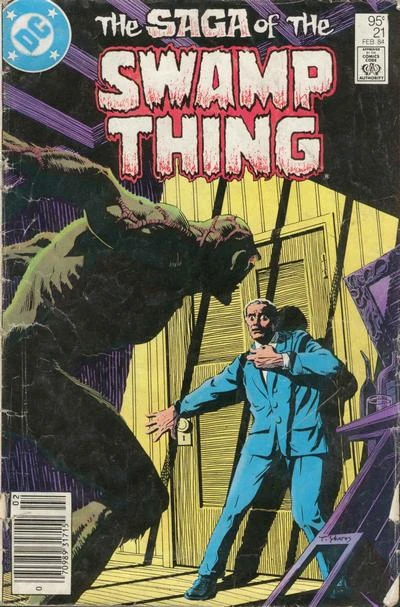
"The Anatomy Lesson," featured in Saga of the Swamp Thing: Book One
Why is Swamp Thing so great? And where does one start if they're new to the world of Swamp Thing? The answer to both questions is the same: Alan Moore's very first story arc, "The Anatomy Lesson," from 1984. Moore came onto the book with Saga of the Swamp Thing #20, in which he wrapped up some loose ends from writer Martin Pasko, but then immediately moved forward with his plan to turn the character inside out—and in the process, sent Swampy on one of the most beautiful, thought-provoking existential crises in comic history. Volumes have been written on the greatness of "The Anatomy Lesson" and Moore's run in general. In this case, the praise is more than deserving.
On the art side of things, penciler Steve Bissette, inker John Totleben, and colorist Tatjana Wood (all of whom had been working on Saga of the Swamp Thing prior to Moore's arrival) added a sense of continuity to the book but still managed to push things forward with "The Anatomy Lesson." Strange, swirling panels gave the book an often unhinged, ethereal quality that in many ways aligned with the book's themes and the main character's uneasy path toward accepting his new life as essentially a plant deity.
Believe the hype: Alan Moore's run is a masterpiece, and "The Anatomy Lesson" is the first story you'll want to read if you're ready to take the plunge into the murky, supernatural world of Swamp Thing.
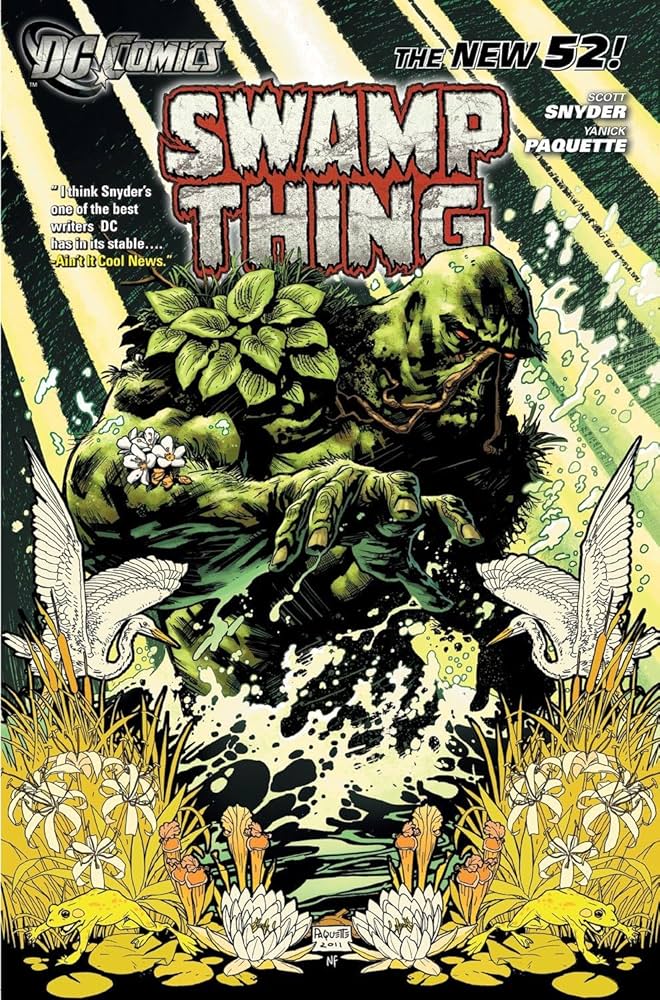
Swamp Thing Vol. 1: Raise Them Bones
With his Swamp Thing work, Scott Snyder gave us one of the highlights of DC's New 52 relaunch in 2011 (along with his Batman run, which is also exceptional—probably even better than Swamp Thing). One of the great things about Snyder's run was how much it was written in response to Alan Moore's work without repeating it or undermining it. Whereas Moore took Swamp Thing's presumed alter ego, Alec Holland, and more or less eliminated him (ultimately asking the question, "can Swamp Thing retain his humanity if he's not even human?"), Snyder resurrected the Holland character and made him an essential part of Swamp Thing's identity. Artist Yanick Paquette brought a style that didn't really look like any previous Swamp Thing artists, but, like Bissette and Veitch before him, he experimented with panel arrangement and flow, creating an otherworldly feel that is still quite legible. Snyder's run also introduced a really cool counterpoint to The Green called The Rot, which would be at the center of a crossover with Jeff Lemire's Animal Man series.
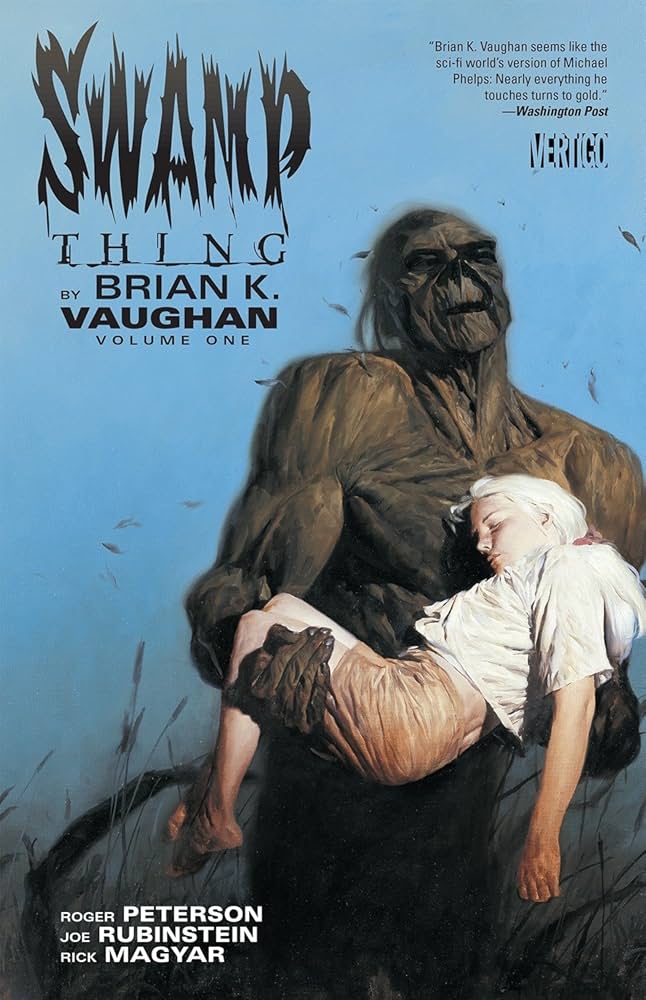
Swamp Thing by Brian K. Vaughan Vol. 1
Brian K. Vaughan's tenure on Swamp Thing may not be everyone's cup of tea, especially since he mostly sidelined Swamp Thing and his love interest Abby in favor of their daughter Tefé (who, SPOILER, also has elemental powers and is part demon, although I wouldn't advise looking up why she's part demon). However, Vaughan really swings for the fences and does some rather interesting things with Swampy's lore, so definitely check it out if you're a Swamp Thing nerd or a BKV superfan (and, I mean, who isn't?). If that's not enough of a selling point, then the surreal, unsettling covers by the underrated artist Phil Hale are also a delight and perfectly fit the vibe you'd expect from a Swamp Thing book.
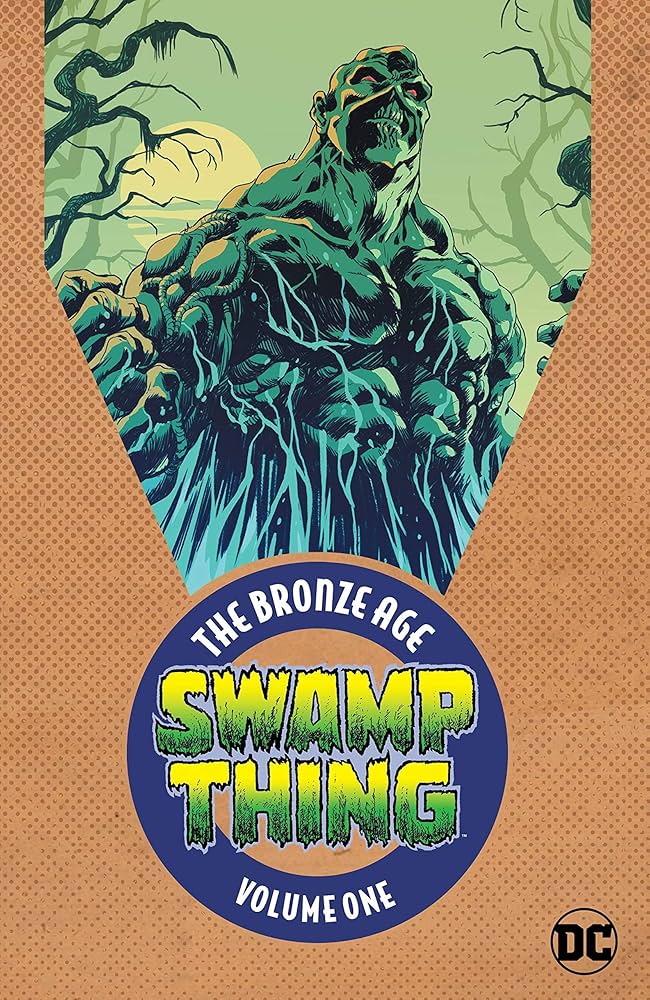
Swamp Thing: The Bronze Age Vol. 1
Readers used to the more complex, philosophical, and existential stories of Alan Moore, Brian K. Vaughan, and even Scott Snyder may find Swamp Thing's earliest adventures to be somewhat by-the-book, but they're still a fun and well executed introduction to many of the elements of his world (like Swampy's girlfriend, Abby, and her villainous uncle, Anton Arcane, but also the environmentalist themes). Len Wein's writing is passable, but Bernie Wrightson brings a level of detail and creepiness to the art (as one would expect) that elevates these stories beyond the standard horror comic fare of the day and are reason enough to at least skim this volume. If you want to know what Swamp Thing was like in his earliest adventures or want a point of comparison to Moore's game-changing work, then these Bronze Age collections are the place to look.
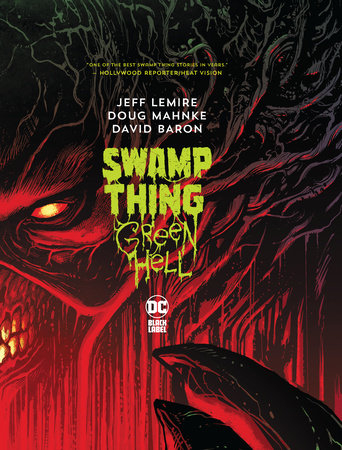
Swamp Thing: Green Hell
If Scott Snyder's run on Swamp Thing is a response to Alan Moore, then Jeff Lemire's work on the character is a response to both of them. Part of DC's Black Label imprint (which was sort of like the new Vertigo line, in the sense that it contained more adult-oriented, out-of-continuity stories), Lemire's Green Hell is basically The Last Swamp Thing Story: in the future, the world is a flooded wasteland and the three major elemental forces—The Green, The Red, and The Rot—decide it's time to destroy everything and start all over. Which sounds great, unless you're among the few humans who have managed to survive this long. Luckily, Alec Holland has some experience with saving the world. The problem is, well… he's been dead for years. If you're looking for a more typical Lemire book (like, with a young person learning important life lessons in a grounded, rural setting), Green Hell is not that, but it's still a worthwhile addition to the Swamp Thing mythology that brings up a lot of interesting ideas and will stick with you after you've read it. If you often find that Swamp Thing is a little too out there for you, then the art of Doug Mahnke (one of DC's go-to pencillers for major superhero books) should make things a little more palatable.
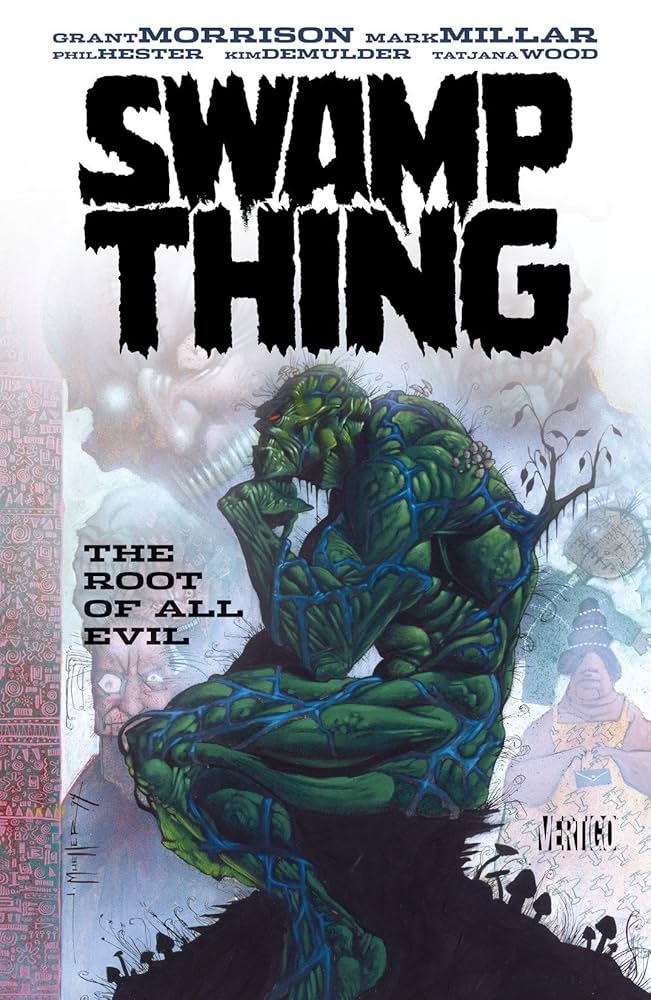
Swamp Thing Vol. 1: The Root of All Evil
Alan Moore wasn't the only big-name writer from the United Kingdom to work on Swamp Thing. After Nancy A. Collins' somewhat tame (for a Swamp Thing comic) run on the book, Scottish superstars Grant Morrison and Mark Millar would bring back the psychedelic elements of Moore's work to Swampy's world. Morrison only stuck around for four issues, but Millar continued with the book for another couple years, before it was unfortunately cancelled. Both Morrison and Millar would go onto bigger and better things, with Morrison rewriting the book on the X-Men, Superman, and Batman, while Millar spent the next few decades getting his comics turned into big-budget movies. Nonetheless, they left us with some of the best post-Moore Swamp Thing comics, and some of the best Swamp Thing comics of the '90s for that matter. One thing to note, though: while it may be tempting to jump from Moore to Millar/Morrison, I would not advise skipping Rick Veitch and Nancy A. Collins' runs. Millar builds upon what they established quite a bit.

Swamp Thing Winter Special, featured in Swamp Thing: Roots of Terror
The Swamp Thing Winter Special of 2018 is notable for two reasons: it features one story by Tom King (who was basically the biggest comic writer in the world at the time, having just finished up Mister Miracle, in addition to writing Batman), but also the very last Swamp Thing story by comic legend/Swampy's co-creator, Len Wein. Tom King sticks to his strengths by telling a heartfelt tale of a severely weakened Swamp Thing leading a lost boy through a snowstorm, which is exacerbated by the fact that they're being chased by a monster. The Len Wein portion of the book is something you don't see every day and a rare treat for Swamp Thing fans. Wein sadly passed before the completion of the script, but artist Kelley Jones (with the help of colorist Michelle Madsen) was able to draw out 20 pages of the story based on what Wein had written—all without text. It's a lovely sendoff to one of the architects of Swamp Thing's mythology, but also a nice hit of nostalgia for anyone who hasn't thought about Kelley Jones since his work on Batman or Sandman in the '90s (or in my case, that one Aliens mini-series from 1992).
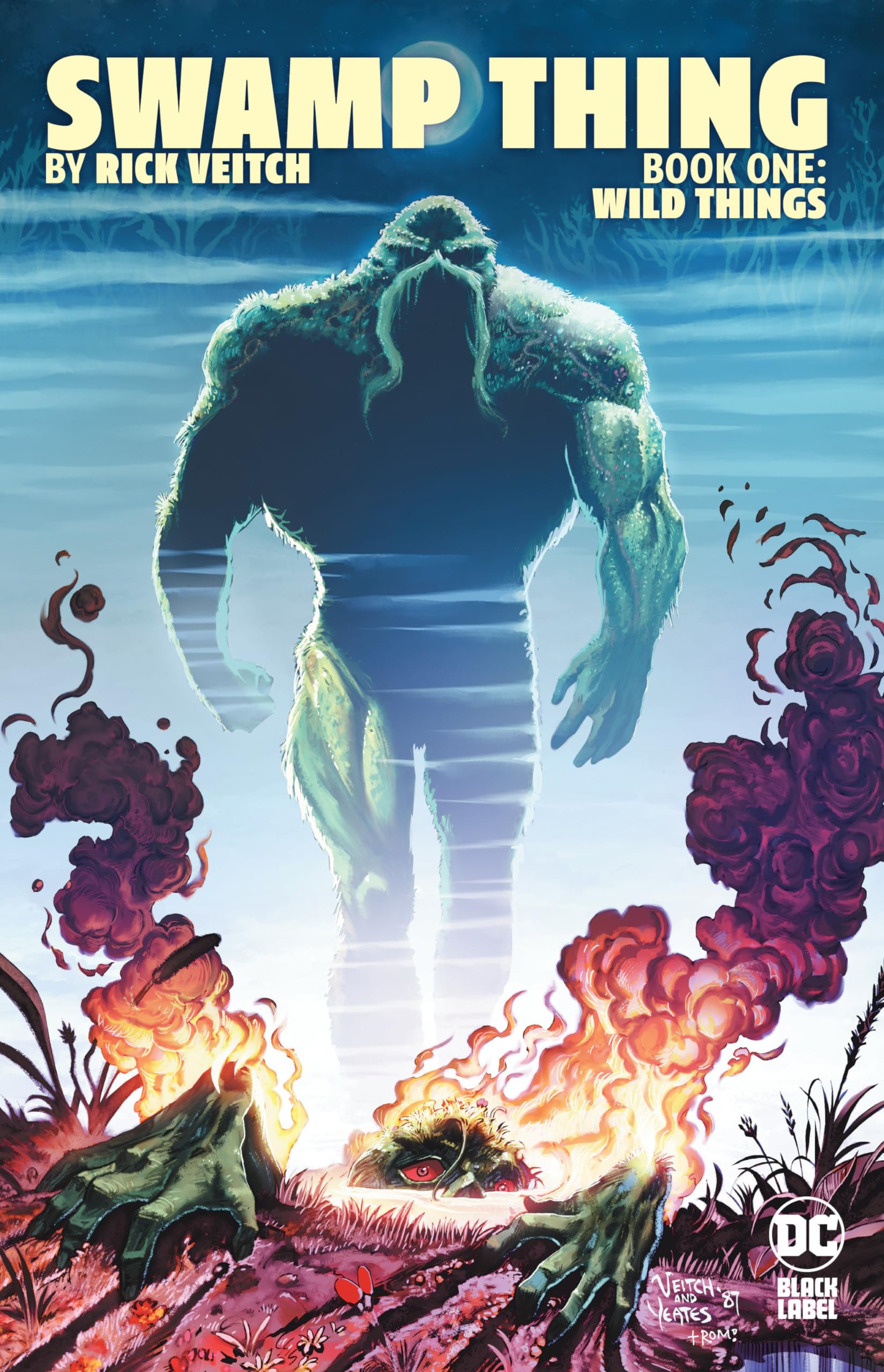
Swamp Thing by Rick Veitch Book One: Wild Things
Rick Veitch had the unviable task of following up writing duties on one of the greatest comic runs of all time after Alan Moore left the book, but the results were, for the most part, surprisingly great. Or at least interesting. Veitch had already been drawing Swamp Thing and was supposedly Moore's pick to be the next writer, so he seemed like an obvious choice. However, like Moore, Veitch would have plenty of issues with DC editorial (look up the infamous, unpublished Swamp Thing #88 if this is a rabbit hole you feel you must go down). Obviously, Veitch's writing skills (by his own admission) were not at the level of Moore's, but I think he kept the book in the spirit of Swamp Thing in that he was trying out a lot of interesting ideas, and it's commendable how many of them worked out. Also, shout out to Tatjana Wood, who was coloring Swamp Thing before Moore got on board, was still coloring it when Veitch took over, and would continue to color it until it was cancelled in 1996. Truly one of the best (and easily one of the most underrated) to ever do it.
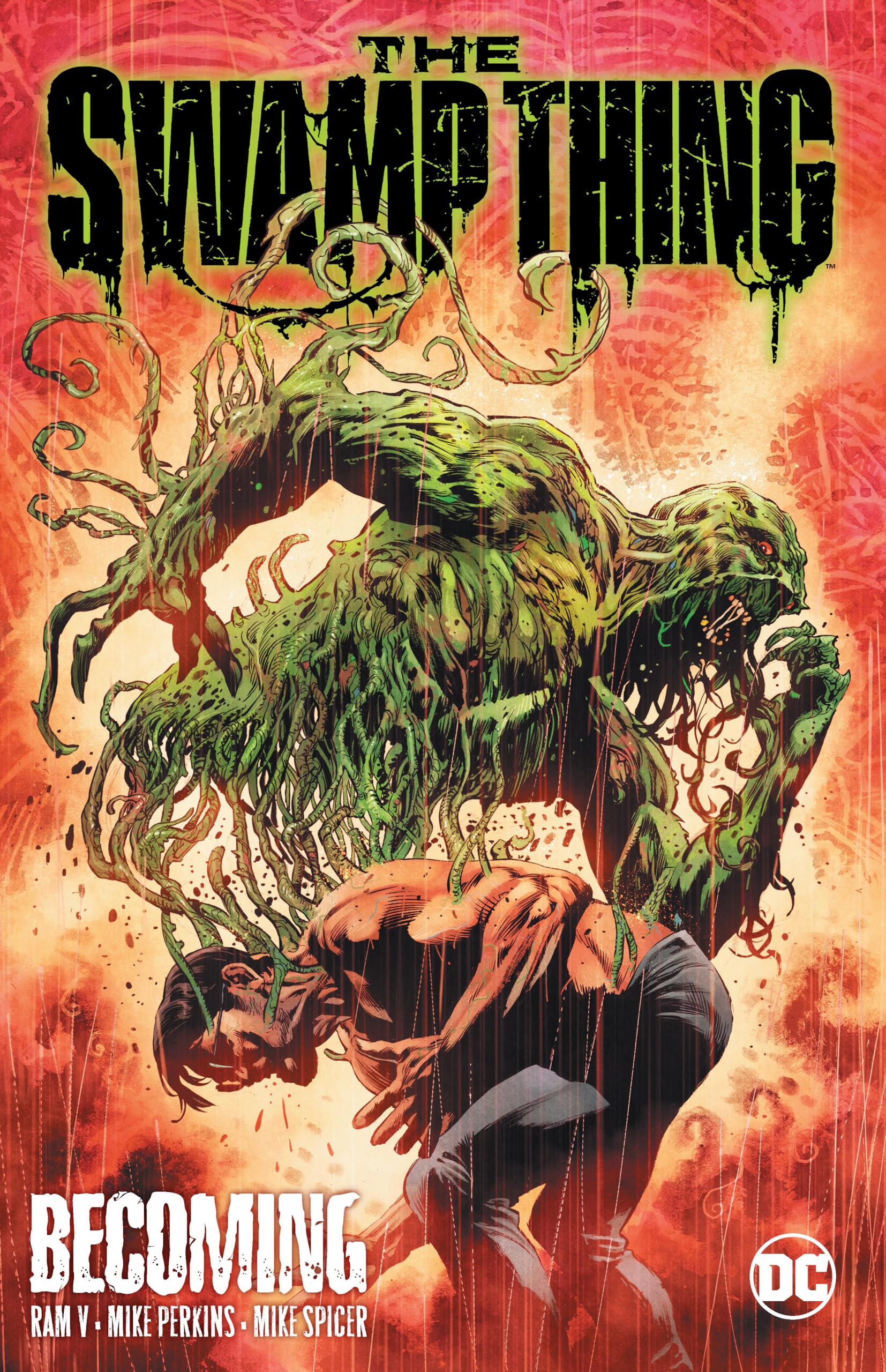
The Swamp Thing Vol 1: Becoming
In Ram V’s run, we’re introduced to a new Swamp Thing—Levi Kamei—making it a good place for new fans to jump on if they don’t want to read several hundred back issues to get caught up. The author occasionally overwrites his exposition, but I think it’s kind of endearing, especially since it’s very reminiscent of Alan Moore. This is on top of Mike Perkins’ detailed, intricate art that really helps sell the grotesqueness of the book’s horror elements and harkens back to classic Swamp Thing artists like Steve Bissette and Rick Veitch without appearing dated. Neither the best nor the worst entry in Swampy’s long, illustrious career, but a solid, worthwhile read nonetheless.
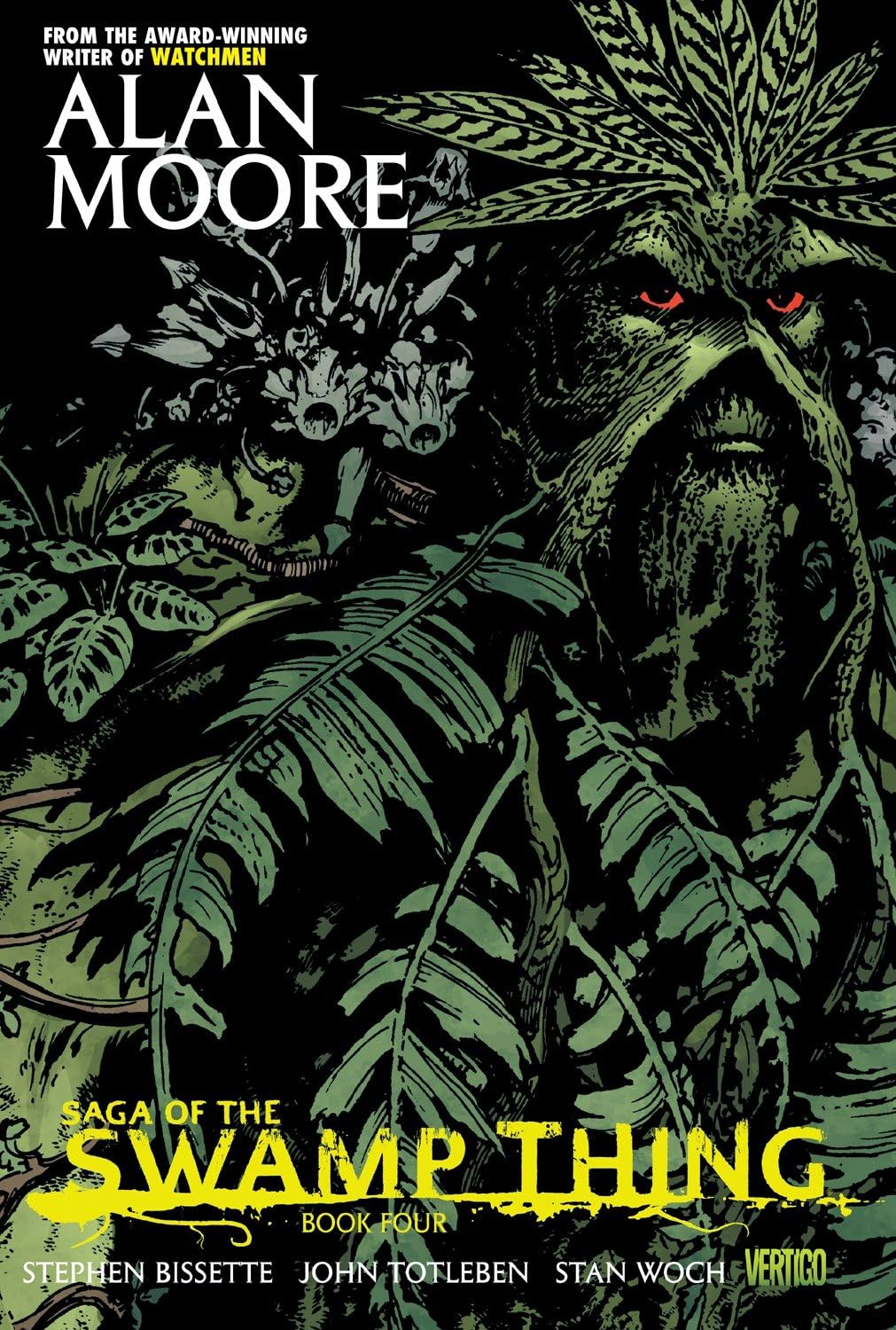
"Windfall," "Ghost Dance," "The Parliament of Trees," and more, featured in Saga of the Swamp Thing: Book Four
Alan Moore wrote 45 issues of Swamp Thing, starting off strong with "The Anatomy Lesson" storyline and continuing with very little drop in quality until he left the book on issue #64 (it's actually surprising he lasted that long—his resentment of DC Comics is legendary at this point). However, I would argue that some of his best and most memorable issues fall toward the middle of his run. Originally collected in a trade paperback titled A Murder of Crows, issues #43 through about #50 really highlight how much can be done with a character like Swamp Thing. Moore gives us a few semi-standalone issues that position Swamp Thing as a background character, instead exploring the perspectives of those whose lives intersect with the big green muck monster. The "Windfall" issue is a particular standout: a hippie named Chester discovers one of the hallucinogenic tubers that grows on Swamp Thing's back, only to share it with both his friend's dying wife and a rude drug addict—but it turns out the results for Swampy tubers vary wildly. Issue #47 introduces The Parliament of Trees (an essential component of Swamp Thing lore), which further complicates our hero's understanding of his new life as a protector of the Green. This batch of issues also shows how Swamp Thing factored into the huge, company-wide crossover event, Crisis on Infinite Earths, which Moore manages to make work, despite Swamp Thing being a fundamentally different comic than just about every other DC book at the time.
Did you like this blog post? Keep up to date with all of our posts by subscribing to the Library’s newsletters!
Keep your reading list updated with our book lists. Our staff love to read and they’ll give you the scoop on new tv-series inspired titles, hobbies, educational resources, pop culture, current events, and more!
Looking for more great titles? Get personalized recommendations from our librarians with this simple form.

